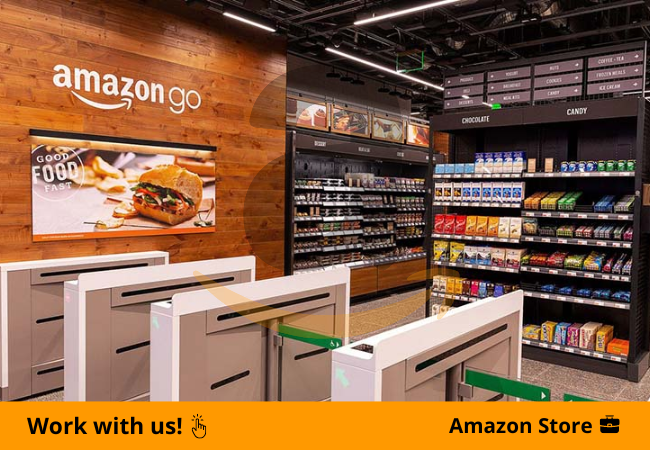Understanding employment eligibility verification has become essential for both employers and job seekers in today’s complex regulatory environment. The United States maintains strict requirements to ensure only authorized individuals can legally work within its borders. These rules protect both domestic workers and maintain the integrity of the employment system.
Recent policy changes have made I-9 compliance more challenging than ever before. Remote employment arrangements and digital nomadism have added new layers of complexity to traditional verification processes. Employers must now navigate an increasingly intricate landscape of federal regulations and documentation requirements.
Carregando anúncio...
Multiple stakeholders shape this process, from USCIS officials to HR professionals and immigration attorneys. The Department of Labor continues to refine enforcement mechanisms while businesses adapt their talent acquisition strategies. These developments significantly impact both domestic hiring practices and international recruitment efforts across various industries.
Key Takeaways
- Employment eligibility verification is mandatory for all U.S. employers regardless of company size
- I-9 compliance requirements have evolved significantly with remote work trends
- USCIS and Department of Labor regulations create a complex regulatory framework
- Multiple stakeholders including HR professionals and immigration attorneys play crucial roles
- Recent policy changes affect both domestic and international talent acquisition strategies
- Digital nomadism and remote arrangements have added new verification challenges
Understanding Work Authorization in the U.S.
Work authorization forms the legal foundation that allows foreign nationals to earn income within United States borders. The complex framework of immigration law creates specific pathways for individuals to obtain employment eligibility. Understanding these requirements protects both workers and employers from potential legal complications.
The immigration system establishes clear boundaries between authorized and unauthorized employment. USCIS work permits represent just one component of this broader regulatory structure. Multiple agencies collaborate to enforce these standards across different industries and employment sectors.
What Constitutes Legal Work Authorization
Legal work authorization encompasses any official permission granted by the United States government allowing an individual to accept employment. This authorization can stem from various immigration statuses, each with distinct requirements and limitations. The key distinction lies between permanent and temporary work authorization, which affects long-term career planning.
Permanent residents hold unrestricted work authorization through their green card status. They can work for any employer without additional documentation. Temporary workers, however, must maintain specific visa categories that define their employment parameters.
Conditional status holders represent another category requiring careful attention to renewal deadlines. Their legal work status depends on meeting ongoing eligibility requirements. Failure to maintain these conditions can result in immediate work authorization termination.
Why Work Authorization Matters for All Parties
Employers face significant legal and financial risks when hiring unauthorized workers. Federal law requires verification of employment eligibility for all employees, regardless of citizenship status. Penalties for violations can include substantial fines and criminal charges in severe cases.
The I-9 employment eligibility verification process creates a paper trail documenting compliance efforts. Employers must examine original documents establishing both identity and work authorization. Foreign worker rights include protection from discrimination during this verification process.
Employees benefit from understanding their authorization limitations and renewal requirements. Many work permits have specific expiration dates requiring timely renewal applications. Missing these deadlines can create employment gaps and complicate future immigration applications.
Proper authorization also provides access to various employment benefits and protections. Workers with valid legal work status can pursue career advancement opportunities without fear of deportation. They also qualify for certain federal programs and protections under labor laws.
Categories of Work Authorization Available
Employment-based visas represent the largest category of temporary work authorization. The H-1B visa serves specialty occupation workers requiring bachelor’s degrees or higher. These visas typically last three years with possible extensions up to six years total.
L-1 visas facilitate intracompany transfers for executives, managers, and specialized knowledge workers. O-1 visas target individuals with extraordinary abilities in sciences, arts, education, business, or athletics. Each category maintains specific eligibility criteria and application procedures.
Family-based work authorization derives from relationships with U.S. citizens or permanent residents. Spouses of certain visa holders can apply for employment authorization documents. These permits often provide more flexibility than employment-based categories.
Asylum seekers and refugees can obtain work authorization 150 days after filing their applications. This category recognizes the humanitarian need for economic stability during lengthy legal processes. USCIS work permits in this category typically require annual renewal until permanent status is achieved.
Student work authorization includes several subcategories with strict limitations. F-1 students can work on-campus without additional authorization but need approval for off-campus employment. Optional Practical Training (OPT) allows graduates to work in their field of study for limited periods.
Curricular Practical Training (CPT) permits students to engage in internships and cooperative education programs. Foreign worker rights in student categories include protection from exploitation and adherence to academic program requirements.
Special programs like TN status serve professionals from Canada and Mexico under NAFTA provisions. These categories often have streamlined application processes but maintain specific occupational requirements. Duration and renewal terms vary significantly between different special program categories.
Each work authorization type carries unique responsibilities and opportunities. Understanding these distinctions helps individuals choose appropriate pathways for their career goals and immigration objectives. Proper planning can lead to more permanent solutions over time.
Navigating the Application Process for Work Authorization
The journey toward work authorization begins with understanding your specific eligibility category and gathering required documentation. Each pathway has unique requirements that must be met before submitting your application. Success depends on careful preparation and timing.
The process can feel overwhelming at first. However, breaking it down into manageable steps makes it more approachable. Proper planning prevents most common application problems that lead to delays or denials.
Understanding Your Eligibility Status
Different categories of applicants face varying eligibility requirements for work authorization. Your specific situation determines which pathway applies to you. Educational background, work experience, and employer sponsorship all play crucial roles.
Recent H-1B visa updates have changed several key requirements for 2025. The lottery system now prioritizes applicants with advanced degrees from U.S. institutions. Wage requirements have increased to match current market rates in specific geographic areas.
Specialty occupation definitions have become more strict under the new guidelines. Your job duties must clearly require specialized knowledge and a bachelor’s degree or higher. Generic job descriptions often lead to application denials under these updated standards.
Country-specific limitations affect certain applicants differently. Some nations have per-country caps that create longer waiting periods. Others benefit from special agreements that expedite processing times.
Employer sponsorship requirements vary by visa category. Some employers must prove they cannot find qualified U.S. workers. Others need to demonstrate financial stability and legitimate business operations.
Essential Forms and Supporting Documents

Form I-765 serves as the primary application for employment authorization documents. This form requires accurate completion with no missing information. Even small errors can result in application rejection and processing delays.
Supporting letters from employers must include specific details about your job offer. The letter should describe your role, salary, and why your skills are needed. Generic template letters often fail to meet USCIS standards.
Educational credential evaluations prove your foreign degrees meet U.S. standards. Only approved evaluation services can provide acceptable reports. These evaluations must be recent and include detailed course-by-course analysis.
Financial documentation demonstrates your ability to support yourself during the application process. Bank statements, tax returns, and employment contracts provide this evidence. All financial documents must be current and properly translated if not in English.
Labor certification plays a vital role in the green card employment process. PERM applications require employers to test the U.S. labor market first. This process can take several months to complete before filing other forms.
Prevailing wage determinations establish minimum salary requirements for sponsored positions. The Department of Labor sets these rates based on job location and requirements. Your employer must pay at least the prevailing wage throughout the process.
The PERM process requires extensive documentation and strict adherence to recruitment requirements. Employers must demonstrate good faith efforts to find qualified U.S. workers before sponsoring foreign employees.
Avoiding Critical Application Mistakes
Incomplete forms represent the most common reason for application delays. Every section must be filled out completely and accurately. Leaving blank spaces or providing inconsistent information creates problems.
Expired supporting documents invalidate entire applications in many cases. Check all document expiration dates before submitting your package. Replace any expired items with current versions to avoid automatic rejections.
Inconsistent information across different application forms raises red flags with immigration officers. Your employment history, education details, and personal information must match exactly. Small discrepancies can trigger lengthy review processes.
Timing errors cost applicants valuable processing time and money. Some applications must be filed within specific windows. Others require maintaining valid status throughout the entire process.
Working with qualified immigration attorneys helps avoid many common pitfalls. Experienced lawyers understand current requirements and processing procedures. They can review your case before submission to catch potential problems.
Maintaining organized documentation throughout the process saves time and reduces stress. Create digital copies of all submitted materials. Keep original documents in a secure location for future reference.
Understanding processing timelines helps you plan accordingly. H-1B visa updates have affected processing speeds for many categories. Some applications now take longer due to increased scrutiny and documentation requirements.
Premium processing options are available for certain application types. This service guarantees faster review times for an additional fee. However, premium processing does not guarantee approval of your application.
Regular status checks through official USCIS channels keep you informed about your case progress. Avoid using unofficial websites that may provide incorrect information. Only rely on official government sources for accurate updates about your application status.
Future Trends in Work Authorization Policies
Work authorization policies continue evolving as the U.S. adapts to changing labor market demands and technological advances. The landscape shifts rapidly, requiring employers and workers to stay current with emerging regulations.
Changes Anticipated in 2025
Several key developments are expected to reshape work authorization in 2025. The H-1B program may see significant reforms, including potential increases in annual caps and streamlined application processes. STEM OPT regulations are under review, with possible extensions for graduates in high-demand fields. Remote worker authorization frameworks are expanding as companies hire talent across geographic boundaries, creating new categories of work permits that address digital nomad trends and cross-border employment arrangements.
Impact of Immigration Policies on Work Authorization
Broader immigration policies directly influence work authorization decisions. Processing times, approval rates, and enforcement priorities shift with political changes and economic conditions. International relations affect bilateral work agreements, while labor shortages in specific sectors drive policy adjustments that favor certain types of work authorization applications.
Resources for Staying Informed
Staying current requires reliable information sources. The USCIS website provides official updates on policy changes and form revisions. The American Immigration Lawyers Association offers professional guidance for practitioners. Industry publications like Immigration Daily deliver breaking news on regulatory developments. HR professionals should bookmark the Department of Labor’s foreign labor certification resources and subscribe to immigration law newsletters for timely updates on work authorization requirements.





 Amazon Store
Amazon Store